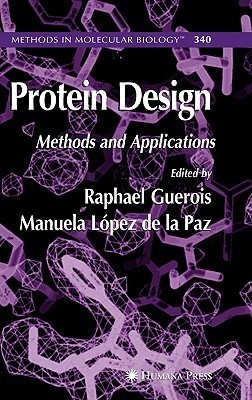
- We will send in 10–14 business days.
- Publisher: Humana Press
- Year: 2006
- Pages: 299
- ISBN-10: 1588295850
- ISBN-13: 9781588295859
- Format: 16 x 23.4 x 2.8 cm, hardcover
- Language: English
- SAVE -10% with code: EXTRA
Protein Design (e-book) (used book) | bookbook.eu
Reviews
Description
Proteins have evolved through selective pressure to accomplish specific functions. The functional properties of proteins depend upon their thr- dimensional structures, which result from particular amino acid sequences folding into tightly packed domains. Thus, to understand and modulate protein function rationally, one definitely needs methods and algorithms to predict and decipher how amino acid sequences shape three-dimensional structures. Protein design aims precisely at providing the tools to achieve this goal. The predictive power of rational protein design methods has dramatically increased over the past five years. A broad range of studies now illustrate how the sequence of proteins and peptides can be tuned to engineer biological tools with intended properties (1-3). The extensive characterization of peptides and protein mutants has enormously benefited the understanding of protein sequence-to-structure relationships. Synergies between computational and experimental approaches have also added momentum to the advancing limits of design methods. The potential applications in fundamental biochemistry and in biotechnology justify the considerable excitement that this progress has generated within the research community. The field is probably mature enough so that expert knowledge can assist researchers of diverse disciplines to rationally create or modify their favorite protein. Thus, the aim of Protein Design: Methods and Protocols is to account for the most up-to-date protein design and engineering strategies so that readers can undertake their own projects with maximum confidence in a successful return. The basic concepts underlying rational design of proteins are intimately related to their three-dimensional structures.
EXTRA 10 % discount with code: EXTRA
The promotion ends in 20d.08:36:59
The discount code is valid when purchasing from 10 €. Discounts do not stack.
- Publisher: Humana Press
- Year: 2006
- Pages: 299
- ISBN-10: 1588295850
- ISBN-13: 9781588295859
- Format: 16 x 23.4 x 2.8 cm, hardcover
- Language: English English
Proteins have evolved through selective pressure to accomplish specific functions. The functional properties of proteins depend upon their thr- dimensional structures, which result from particular amino acid sequences folding into tightly packed domains. Thus, to understand and modulate protein function rationally, one definitely needs methods and algorithms to predict and decipher how amino acid sequences shape three-dimensional structures. Protein design aims precisely at providing the tools to achieve this goal. The predictive power of rational protein design methods has dramatically increased over the past five years. A broad range of studies now illustrate how the sequence of proteins and peptides can be tuned to engineer biological tools with intended properties (1-3). The extensive characterization of peptides and protein mutants has enormously benefited the understanding of protein sequence-to-structure relationships. Synergies between computational and experimental approaches have also added momentum to the advancing limits of design methods. The potential applications in fundamental biochemistry and in biotechnology justify the considerable excitement that this progress has generated within the research community. The field is probably mature enough so that expert knowledge can assist researchers of diverse disciplines to rationally create or modify their favorite protein. Thus, the aim of Protein Design: Methods and Protocols is to account for the most up-to-date protein design and engineering strategies so that readers can undertake their own projects with maximum confidence in a successful return. The basic concepts underlying rational design of proteins are intimately related to their three-dimensional structures.


Reviews